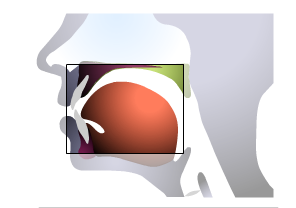Teaching Spanish Pronunciation
1. Why teach pronunciation?
1.3. Vowels
Speech sounds are generally categorised into two main groups; vowels and consonants. Vowels are produced without an obstruction in the oral cavity and are described on the basis of the vertical and horizontal movement of the tongue, while consonants are produced by obstructing the flow of air coming out of the lungs in some way. Consonants are categorised according to their manner and place of articulation and the activity of the vocal cords. The area of linguistics that deals with the articulation of speech sounds is called articulatory phonetics. All this might seem irrelevant for language teachers at first glance, but if you have a basic knowledge of articulatory phonetics coupled with basic phonological knowledge – the phonology of the target language and ideally your students’ mother tongues – you will find it much easier to identify and correct pronunciation mistakes.
Spanish has a simple, symmetrical five-vowel system. Based on the vertical movement of the tongue, which is the height dimension, Spanish vowels are either high (closed), or mid, or low (open). Along the front-back dimension, Spanish vowels are either front, central, or back. So for instance, when pronouncing /i/ as in piso (flat), the front of the tongue body is raised towards the palate. (The back vowels of Spanish are articulated with lip rounding).

Animated cross-section of the articulation of Spanish /i/.
Source: Sounds of Speech, University of Iowa
https://soundsofspeech.uiowa.edu/main/spanish
Activity
Fill in the following chart with the five Spanish vowels. You can jot it down on a piece of paper.
| Front | Central | Back |
High | i |
|
|
Mid |
|
|
|
Low |
|
|
|
Answer
| Front | Central | Back |
High | i |
| u |
Mid | e |
| o |
Low |
| a |
|
